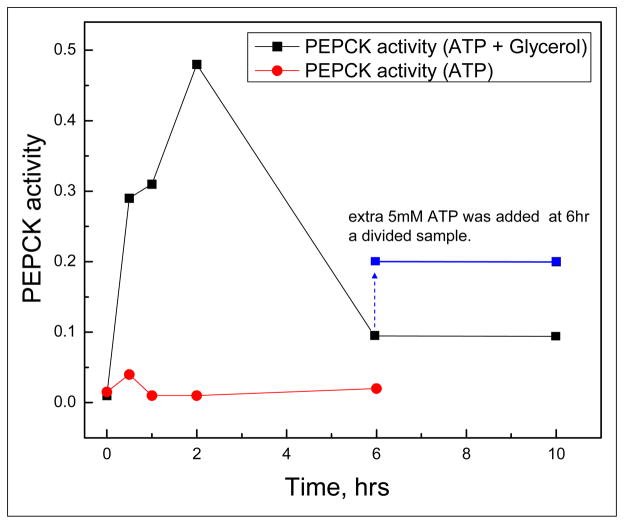Figure 4.
After a GroEL PEPCK-GST complex was loaded onto a glutathione column (isolated directly from cells that overexpressed GroEL and PEPCK-GST, the column material was split and one portion was incubated with ATP alone while the other portion was incubated with the osmolyte glycerol (4 M) and ATP. As our initial test, we assayed the PEPCK activity using approximately equal volumes of whole beads. While no bead bound activity was observed when ATP alone was added to the preformed complex, a substantially larger activity regain was observed when the bead bound complexes were incubated in the presence of the osmolyte/ATP mixture. However, activity declines between 2 and 6 hours of refolding. The resulting activity for two split samples at 6 hours (± ATP) were compared immediately after ATP addition (~ 1 min) and 2 hours later. The activity remain higher in the sample that contained ATP in agreement with the notion that ATP added to GroEL complexes with rebound PEPCK show a moderate amount of PEPCK rerelease, refolding and regain of activity.

